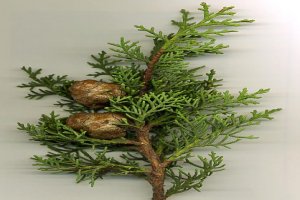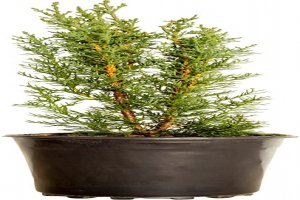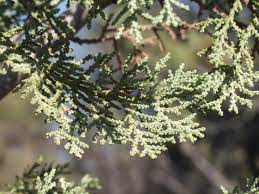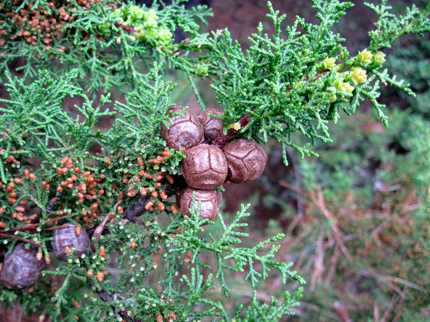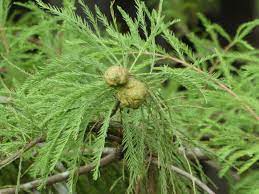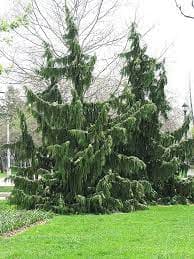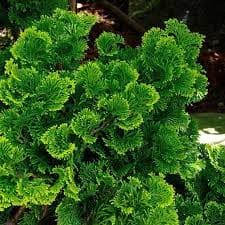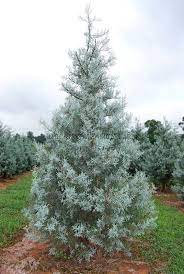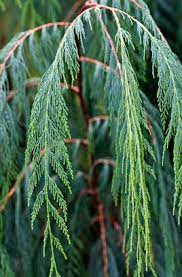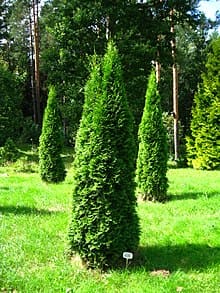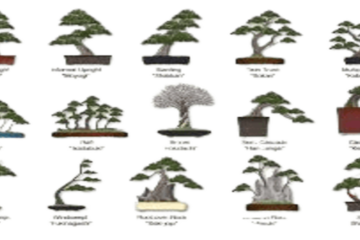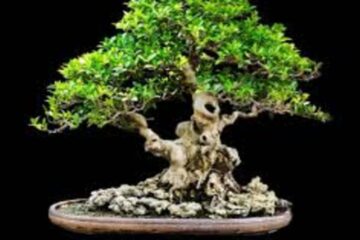How many different types of cypress tree are there? There are a lot of types of cypress trees, and each type has its own sub-species. The biggest difference between cypress trees is the color of their wood, which ranges from yellow to red to gray or white. They’re all excellent choices to plant in the garden because they’re some of the most tolerant trees in terms of drought and low soil quality.
Types of Cypress tree
Content Overview
There are 25 types of cypress tree, at least half of which can be found in North America.
In the long run, they are generally classed as being true or false cypresses. Every type of cypress tree has its own characteristic and thus sets itself apart from the others. This is the list of the 25 types of cypress trees you need to know.
1. Mediterranean Cypress Tree
Credit:common.wikimedia.org
There are plenty of Mediterranean cypress trees around the
Mediterranean Basin grows best in dry, sandy soil.
These trees have large, dark green leaves, a long, slender trunk, and are mostly evergreen.
Mediterranean cypress trees grow fast and live to be between 50 and 150 years old.
These trees often lean over from their vast lifespan and the weight of their branches.
Due to the qualities of this tree, it is often used for fences in colder climates and does not lose leaves or sprout weeds.
2. Bald Cypress Tree
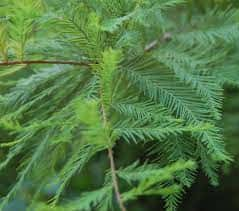
The bald cypress is one of the most majestic trees, particularly at dawn and dusk. This tree grows in large colonies, which makes it a popular choice for shade gardening or landscaping.
It’s especially stunning when planted next to bodies of water. The bald cypress is deciduous, meaning it loses its leaves during the fall and winter months before regrowing them again in spring.
Unlike most, bald cypress trees do not have a lot of branches and can only be found in swamps, like in Florida or Louisiana.
In the summertime, they usually turn a bright yellow. Bald cypress trees grow slowly. Because of this, many have been used to create cabinetry, fences, doors, and so on.
Read More:
- The Bald Cypress Tree Problems and Facts You Must need to Know
- How To Grow Bald Cypress Bonsai। Beginners Ultimate Caring Guidelines
3. Italian Cypress Tree
Credit: amazon.com
The Italian cypress is a fast-growing tree with pyramidal growth and dark foliage. The trunk of an Italian cypress grows in a fluted column, which helps reduce vulnerability to wind damage.
A distinctive feature of Italian cypress trees is that they are often grown from cuttings rather than seedlings, as seedlings may not be genetically identical to their parent tree. This can result in genetic abnormalities due to mutations or cross-pollination with other varieties.
An Italian cypress tree is a type of cypress that is distinctive in its low, roundish, fragrant foliage and the deep, dark green color of its leaves.
It can grow to be 65-80 feet tall and is commonly used in landscaping projects. What’s more, the Italian cypress also emits a fragrant scent.
4.MacNab Cypress Tree
Credit: en.Wikipedia.org
MacNab cypress trees are the second tallest of North American cypresses and can grow up to 40 feet tall. The tree’s trunk is thick, it has large leaves, and it has dark green foliage.
The bark of this tree is layers of gray-black. It is often found in the following US states: Florida, Louisiana, Arkansas, Texas, and Oklahoma.
5. Lemon Cypress Trees (Cupressus macrocarpa ‘Goldcrest’)

Lemon cypress trees are most often planted as ornamental garden shrubs and ornamental trees. These cypress trees are famous for their bright, yellow-gold leaves that maintain their color through the winter.
The bark is rough and scales as the tree matures. The cones are small and spherical. They grow quickly, their wide-spread branches rising towards the sky.
The lemon cypress tree is a kind of Monterey cypress tree. Like the species, the branches of the lemon cypress tend to grow irregularly.
This decoratives Cypress tree, Cupressus macrocarpa ‘Goldcrest’, has a high growth rate of 10 (25 cm) per year. The plant will grow up to 16 ft. (5 m) tall after ten years. In as little as 20 years, a tree will reach its full height of 32-40 ft. (10 to 12 m) 20 years
A large factor as to why lemon cypress trees are so popular is that they are self-maintaining. The softer conifer never needs pruning and maintains its columnar shape. The only time a tree should be pruned is when its height needs to be managed.
One of the distinguishing characteristics of the lemon cypress is the aromatic strong lemon scent emitted from the soft, feather-like leaves.
Lemon cypress is a natural hedge, privacy screen, or can also be grown as a specimen tree in coastal or Mediterranean gardens.
6. Gowen Cypress (Cupressus Goveniana)
Credit: Stevenkharper.com
Gowen Cypress is a type of tree native to the state of California, the Monterey Peninsula on the coast of Monterey County, and the Western United States. This type of tree is only found in small and scattered populations. The tree is an evergreen, cone-shaped type.
There are different sizes available. Some trees will start out at 3.5 feet in some sites and reach a height of 160 feet in the right conditions. It has dark, dense foliage that spreads.
Other types, like the famous Cypress variety that burned in 1987, have yellow-green foliage. Fortunately, you can still find some on the regenerated trees that were cut down after the fire.
It grows slowly, which may account for its scarcity in some areas. It often lives in prostrate form, growing close to the ground.
7. Chinese Cypress Tree
Credit: Globaltrees.org
The Chinese Cypress tree known as Chinese swamp cypress trees can be found all across North America and Europe, though they grow most plentifully in Southeast China.
Typical features of a Bald Cypress include a conical-shaped crown and the ability to grow up to 60 to 90 feet in height with a trunk 3 feet in diameter. This cypress can survive submerged in water up to 2 feet deep.
8. Nootka Cypress Tree
The Nootka cypress is a tree in the family Cupressaceae, typically 20 to 30 feet tall and 8 to 12 feet wide. It begins as a slender structure and it eventually takes on a pyramid shape.
This tree is perfect for a house with privacy because of its weeping nature. This conifer is happiest in warmer climates and is ideal in any season.
Credit: Pintrest.com
9. Japanese hinoki cypress
Credit: Pinterest.com
The hinoki cypress, also known as a white cypress, is arguably one of Japan’s most popular and unique trees. The tree’s scent lends itself to its common name—the Japanese word for cypress is hinoki, which means pink smell. Common uses for these trees include creating Buddhist temples and homes for Shinto gods, as well as props in traditional Noh theater plays.
The tree has slow-growing roots and bears a classic pyramid shape. The deep green leaves have drooping tips and are needle-like in appearance.
The height of these trees can exceed 80 feet. There are also smaller dwarf Hinoki cypresses that make perfect indoor plants.
10. Blue Cypress Tree
Credit: Pinterest.com
The Blue Cypress tree’s name is derived from the bluish-green hue of its leaves. It’s excellent for both residential and commercial areas. The blue cypress can be found in southwestern U.S. and northern Mexico. It has also a slow growth rate and is very durable.
11. Dwarf Cypress Tree
Credit: pinterest.com
The Dwarf cypress tree is a small, short tree that only grows in the Southeastern United States. This evergreen has a thin, rounded top and a greenish when mature, they can grow to a height of 20-30 feet.
The leaves are similar to needles, and they grow on the ground in close proximity to the ground. The tree produces beautiful white flowers that are generally available in late spring or early summer.
12. Cupressus Arizonica
The Arizona cypress is a tree native to southwestern North America that grows up to 15m tall. It has a conical crown with gray-green or blue-green foliage. The trunk is straight, up to 50cm thick, with smooth brown bark when ripe.
It resists up to -18ºC.
13. Cupressus Bakeri (Siskiyou Cypress Tree)
Image Credit: Wikimedia/JOE BLOWE
The Siskiyou cypress is a tree endemic to northern California and southwestern Oregon (USA). It reaches a height of 10 to 25m, and its trunk reaches a thickness of up to 50cm (rarely 1 meter). Its foliage is pendulous, greenish-gray to dull to glaucous greenish-blue.
Like other Cupressus species, its cones remain closed until a forest fire breaks out. But it has a slow growth rate, and it can take years to produce its first cones. If a fire were to break out earlier, it could wipe out too many individuals, making the species even more threatened. It resists up to -20ºC.
14.Cupressus Cashmeriana
Credit: Pinterest.com
The Bhutan cypress is a tree native to the eastern Himalayas. It usually reaches between 20 and 45 meters in height, and the circumference of its trunk is generally 3 meters. When I take a look at it, it has an appearance that can be described as crying. Its leaf is a bluish-green color, making it very valuable.
Unfortunately, it is a threatened species, which is why it is on the red list of the International Union for Conservation of Nature.
It resists up to -7ºC.
15. Cupressus Forbesii (Tecate Cypress Tree)
Image Credit: Wikimedia/JOE BLOWE
The Tecate cypress is a conifer native to the mountainous regions of California, specifically Orange and San Diego. It also thrives in northern Baja California (Mexico). It can grow up to 10 meters tall, and its leaves are deep, light green or green.
It is in a vulnerable position due to limited natural habitat and natural wildfires. Their seeds still grow, though, but for seeds to be able to grow, there has to be cones, and it does not engage in that activity until it matures. Many years may pass before it does.
It resists frosts up to -15ºC.
16. Cupressus Funebris (Chinese Weeping Cypress Tree)
This is a cypress that, despite having a rather sad surname, is one of the most interesting varieties. It is native to China and, unlike others, it has a weeping appearance, which is why it is called weeping cypress.
Its maximum height is at most 35 meters. with a trunk thickness of up to 2m. It has a dense crown, with bright green hanging branches.
It resists up to -12ºC.
17. Cupressus Glabra
This cypress is native to the southwestern United States and is known by the name of Arizona Glabro Cypress.
It grows to a height of 10-15m, with a conical crown that can measure up to 50cm in diameter. The foliage is bluish in color, and the trunk is straight, with smooth, lint-free bark.
It resists without problems up to -8ºC.
18.Cupressus leylandii (Cupressus x Leylandii)
Image Credit : Wikimedia/Gmihail
Leyland cypress is a natural hybrid between Cupressus macrocarpa and Callitropsis nootkatensis (formerly Cupressus nootkatensis). It reaches a height of 20-25 meters, and its leaves are dark green. It produces seeds, but being a hybrid these do not have germinative power.
It resists up to -12ºC.
19. Cupressus macrocarpa(Cupressus macrocarpa).
Image Credit: Wikimedia/vera46
Monterey cypress Also known as macrocarpa is one of the most used varieties to form hedges due to its rapid growth.
The Monterey cypress, known more commonly as it, is native to the southwestern United States. It is one of the best known and cultivated for its wide crown’
Keep in mind that they can reach 15 meters in height and 4 meters in diameter, so it is only recommended in large gardens. There is the common variety, with dark green leaves, the golden one, which has leaves with yellowish touches, and the Golden Crest, with light green, Withstands frost down to -10ºC.
20.Cupressus sempervirens
Image Credit: Flicker
We finish with the common cypress, the Cupressus sempervirens. In its natural state, it grows mainly in the eastern Mediterranean such as Greece, Cyprus, and Turkey. It has a compact and narrow needle-shaped cup. It grows rapidly in the early years, being able to reach 30 meters in height and live for more than 500 years.
The crown is dense, pyramidal, or horizontal in shape, and its trunk can measure up to 1m in diameter, with dark brown bark when mature.
It resists up to -17ºC.
21. Truffle Cypress Tree
Credit: Wikipedia
Truffle is also known as Tuya, is a conifer suitable for temperate climates, which includes 5 different varieties. They are evergreen, always maintain their green color, and are arranged like the scales of fish, that is, scale-like. It can measure between 3 and 18 meters and, although it has slower growth, it forms very dense hedges due to the arrangement of the branches. The planting distance is between 50 and 60 cm.
22. Lawson’s Cypress
It is a conifer that looks very similar to a cypress, although it belongs to another genus of the same family of plants. It is also known as false cypress, bearing a certain resemblance to Tuya for having the leaves arranged in the same way. It can reach great heights, but it is slower growing.
23. Yew Cypress Tree ( Taxus baccata).
Image Credit: Wikimedia
It is pyramidal in shape and slow-growing. It can reach 20 meters in height but grows only about 30 cm a year. For this reason, it is very suitable for topiary, which is the art of giving artistic forms to plants. It prefers cool and humid climates, so it is very suitable for mountain climates. It blooms in summer and in autumn it emits small red fruits that are very toxic, keeps this in mind if there are small children in the house.
Conclusion
This cypress tree is a short, squat evergreen that looks rather unassuming with its dark green, stiff needles, and small cones. But if you happen to be in Japan or China where these trees are native, you’ll know just how special they are. There are many types of cypress trees, but all have common features such as glossy needles and dark-colored bark. Many grow very quickly so if you decide to plant one make sure to give it plenty of room to expand!

